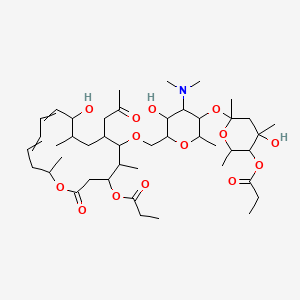|
Name: Methohexital
Type: Barbiturate
AKA: Brevital

|
|
II. Natural Derivative
Synthetic substance, no natural derivative
 |
|
III. Chemical Profile (IUPAC name)

|
|
IV. History
Methohexital is a barbiturate anesthetic developed in the 1950s. It is used for its rapid onset and short duration of action, making it suitable for short surgical procedures and as an induction agent for general anesthesia. Methohexital is favored for its predictable pharmacokinetics and has a long history of use in clinical settings.

|
|
V. Legal Information
Methohexital, a barbiturate, is classified as a controlled substance in many jurisdictions due to its potential for abuse. In the US, it is regulated as a Schedule IV drug. Globally, its status involves controls reflecting concerns about misuse and dependence, with regulations focused on medical use and prevention of abuse.
US Federal Schedule - IV
Schedule IV drugs, substances, or chemicals are defined as drugs with a low potential for abuse and low risk of dependence. Some examples of Schedule IV drugs are: Xanax, Soma, Darvon, Darvocet, Valium, Ativan, Talwin, Ambien, Tramadol.
Key US Federal Policies:
Controlled Substances Act. Public Law: Public Law 91-513 (text can be found on GovInfo) (https://www.dea.gov/drug-information/csa). Date enacted: October 27, 1970.
|
|
VI. Physical Effects
Methohexital, a barbiturate, is used for its anesthetic and sedative effects. As a downer, it induces significant sedation and muscle relaxation. Short-term effects include rapid onset of sleep and reduced anxiety, while long-term use can lead to tolerance and dependence. Overdose risks include severe sedation and respiratory depression. Safe dosing requires careful medical supervision. Recent research emphasizes its effectiveness for anesthesia but also notes risks of dependence and overdose.  |
|
VII. Psychological Effects
Methohexital, a barbiturate, affects GABA-A receptors, leading to sedation and mood alteration. Psychological effects include reduced anxiety and cognitive impairment with long-term use. Effects typically last 20-30 minutes, with ongoing research into its use in anesthesia and potential cognitive side effects.
 |
|
VIII. Culture
Methohexital is a barbiturate used for its sedative and anesthetic properties. It has been used in medicine since the mid-20th century. Its cultural impact includes its role in anesthesia and debates about barbiturate use. Proponents highlight its effectiveness in sedation, while opponents raise concerns about addiction and misuse. Its use is primarily medicinal, reflecting ongoing debates about barbiturate safety.
 |
